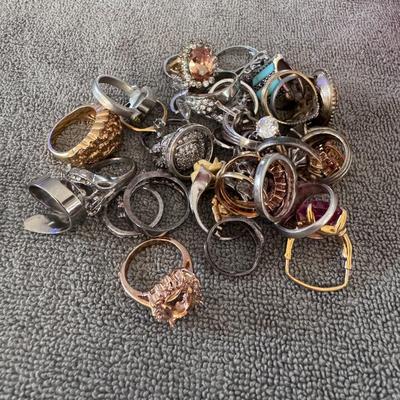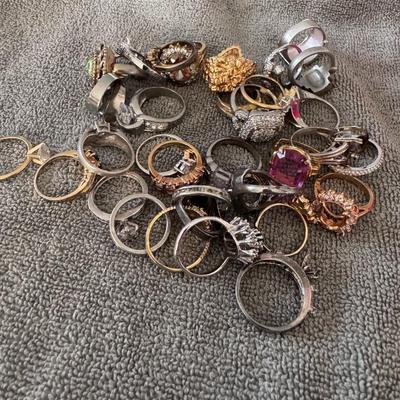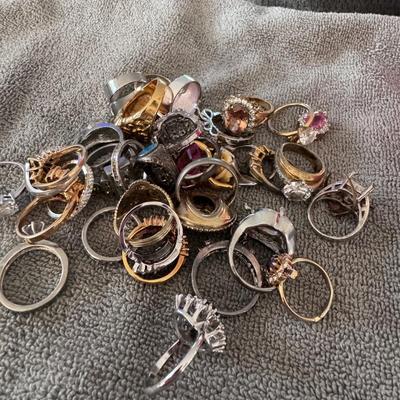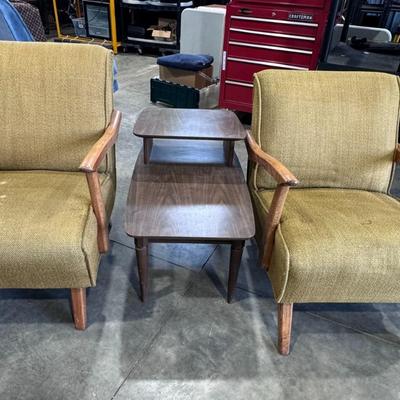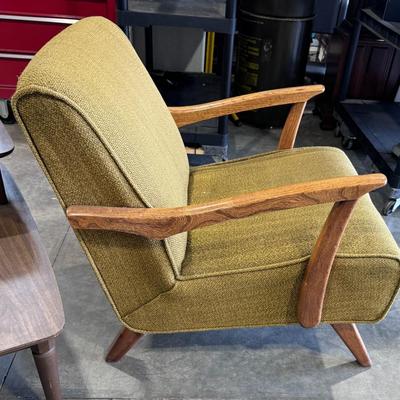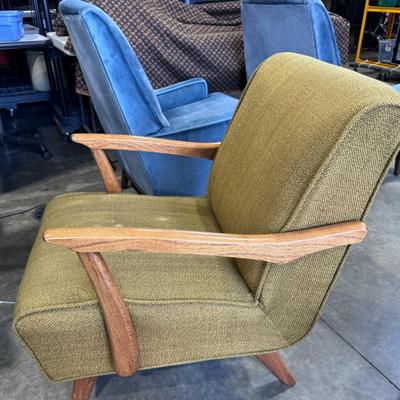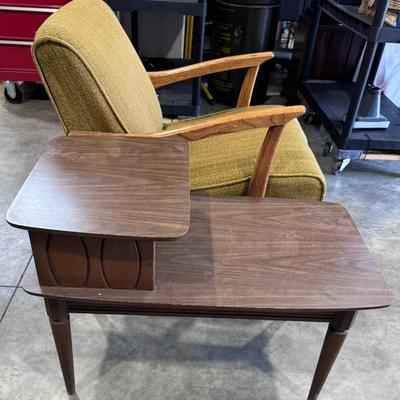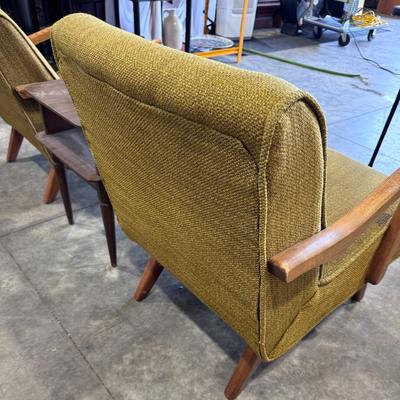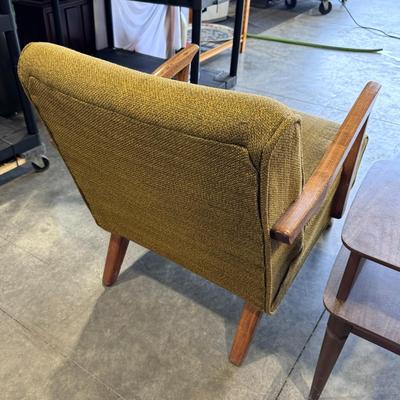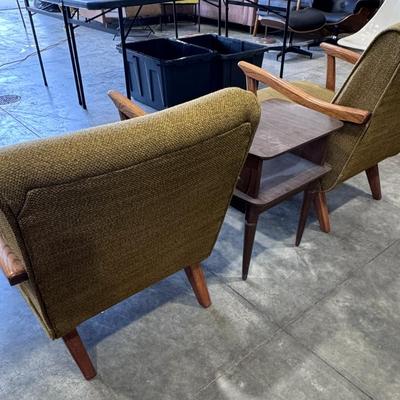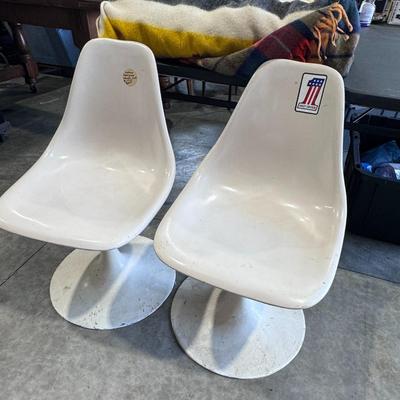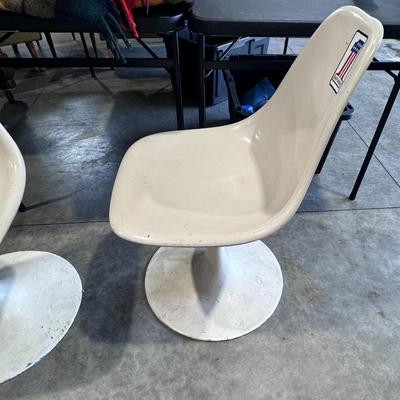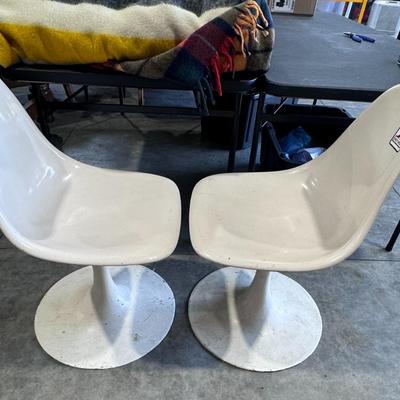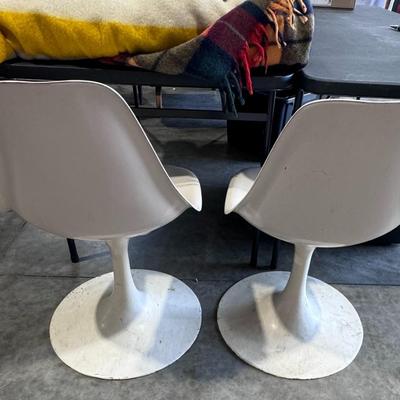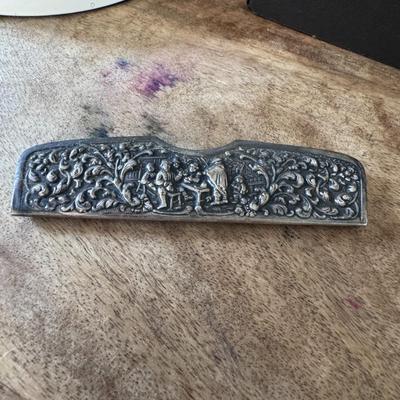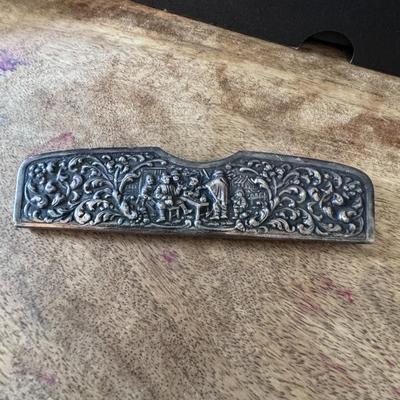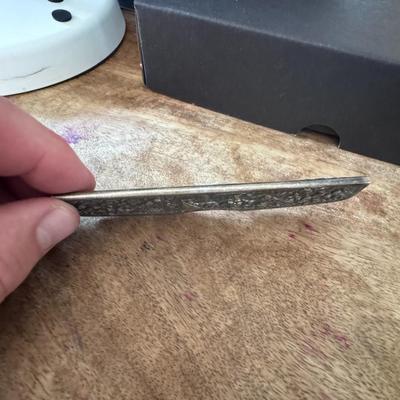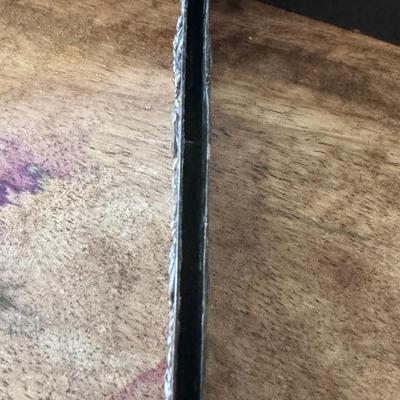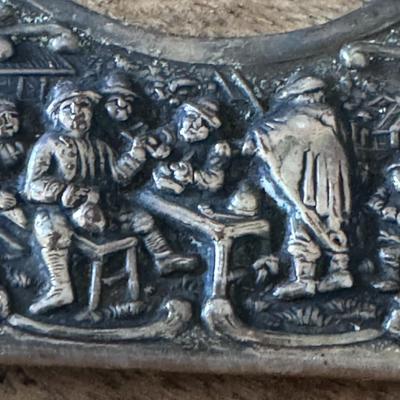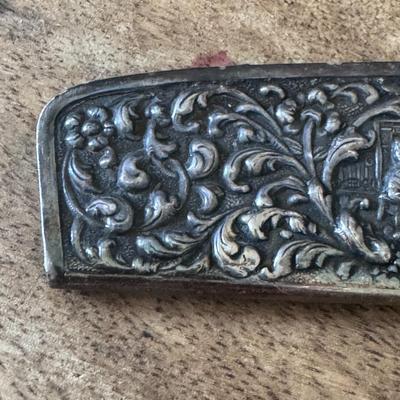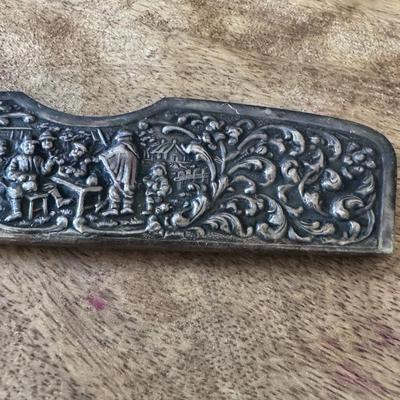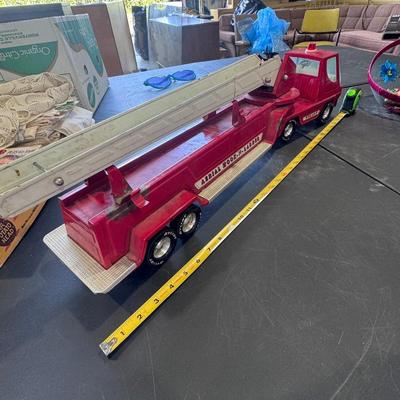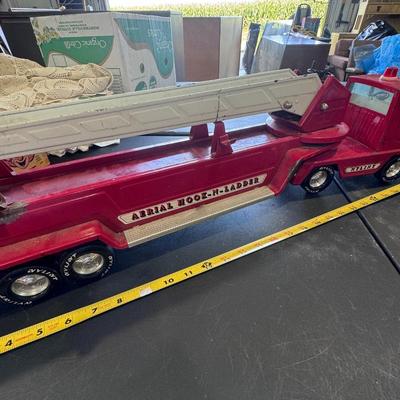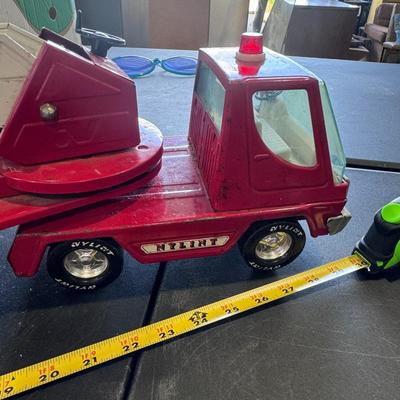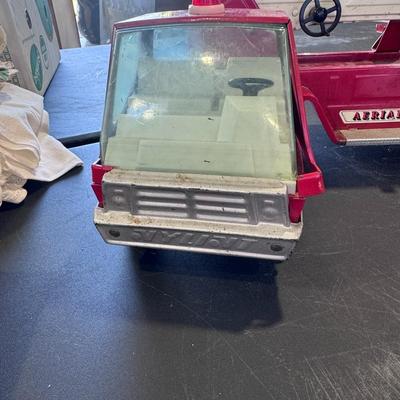-

Vintage J. Ritter Roadrunner Brooch with a faux turquoise eye. Here's some information about this item: Maker: The brooch is a piece by J. Ritter, a recognized name in vintage costume jewelry known for their detailed designs. Design: It features a roadrunner bird in a silver-tone finish, with a prominent faux turquoise cabochon serving as the eye, embodying a classic mid-century aesthetic often associated with Southwestern styles. Material: The brooch is made of a silver-tone metal and features a faux, or imitation, turquoise stone for the eye. Collectibility: J. Ritter roadrunner brooches are considered collectible vintage jewelry pieces, particularly appealing to enthusiasts of unique animal-themed accessories. 401 / 1369 -
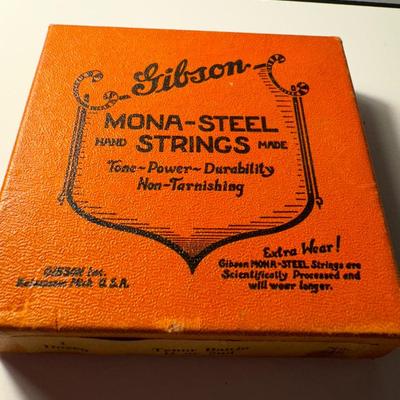
vintage orange box of Gibson Mona-Steel Hand Strings. The packaging highlights features like "Tone-Power-Durability" and "Non-Tarnishing", with an "Extra Wear!" claim stating they are "Scientifically Processed and will wear longer". These vintage strings date back to the 1930s-1940s, specifically the WWII era. The "Mona-Steel" refers to the composition of the strings, which is a variation of monel steel. Monel steel is typically 67% pure nickel, with the remaining composition being copper and iron. Gibson described these strings as having a distinct tone that falls between pure nickel wrap and nickel-plated steel. They were also known for lasting longer than both pure nickel and nickel-plated steel strings and causing less fret wear compared to nickel-plated steel strings. Some users found them particularly good for acoustic archtop guitars, bridging the gap between typical acoustic and electric strings with a unique midrange emphasis. 402 / 1369 -
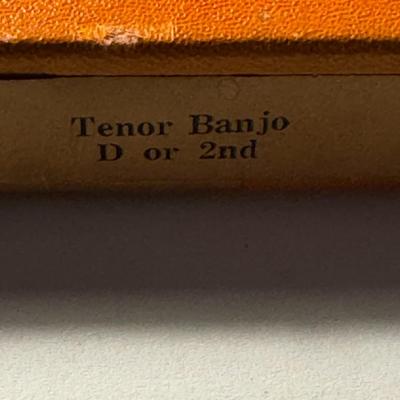
vintage orange box of Gibson Mona-Steel Hand Strings. The packaging highlights features like "Tone-Power-Durability" and "Non-Tarnishing", with an "Extra Wear!" claim stating they are "Scientifically Processed and will wear longer". These vintage strings date back to the 1930s-1940s, specifically the WWII era. The "Mona-Steel" refers to the composition of the strings, which is a variation of monel steel. Monel steel is typically 67% pure nickel, with the remaining composition being copper and iron. Gibson described these strings as having a distinct tone that falls between pure nickel wrap and nickel-plated steel. They were also known for lasting longer than both pure nickel and nickel-plated steel strings and causing less fret wear compared to nickel-plated steel strings. Some users found them particularly good for acoustic archtop guitars, bridging the gap between typical acoustic and electric strings with a unique midrange emphasis. 403 / 1369 -
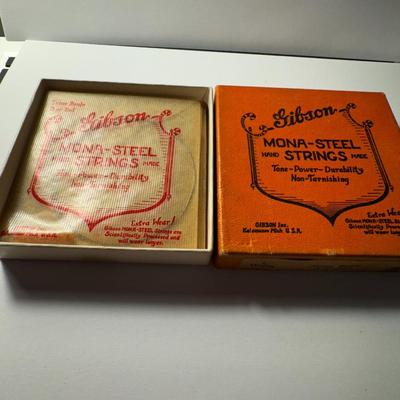
vintage orange box of Gibson Mona-Steel Hand Strings. The packaging highlights features like "Tone-Power-Durability" and "Non-Tarnishing", with an "Extra Wear!" claim stating they are "Scientifically Processed and will wear longer". These vintage strings date back to the 1930s-1940s, specifically the WWII era. The "Mona-Steel" refers to the composition of the strings, which is a variation of monel steel. Monel steel is typically 67% pure nickel, with the remaining composition being copper and iron. Gibson described these strings as having a distinct tone that falls between pure nickel wrap and nickel-plated steel. They were also known for lasting longer than both pure nickel and nickel-plated steel strings and causing less fret wear compared to nickel-plated steel strings. Some users found them particularly good for acoustic archtop guitars, bridging the gap between typical acoustic and electric strings with a unique midrange emphasis. 404 / 1369 -
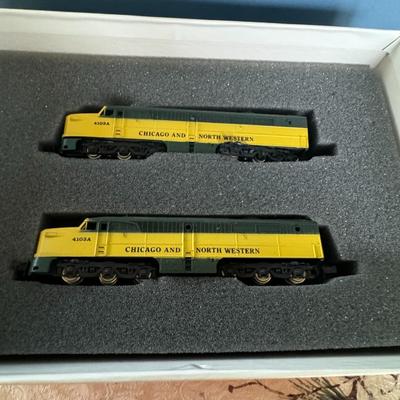
Kato "N" Scale EMD E-8 model train set, featuring a powered A unit and a dummy A unit The set is numbered 2703 and is in the Chicago & Northwestern livery This particular model is based on the EMD E8A diesel locomotive, visually similar to the E9A. These E-units were used in passenger service during the 1950s and 70s, with some still in use for museum or excursion service today. Key features of this model set include: Powered A & Dummy A units: Allows for realistic operation of a lead and trailing locomotive. Chicago & Northwestern livery: Features the iconic paint scheme of this classic railroad. N Scale: A popular scale for model railroading, known for its smaller size. DCC friendly: The locomotives are designed to be easily converted to Digital Command Control (DCC) if desired. 405 / 1369 -
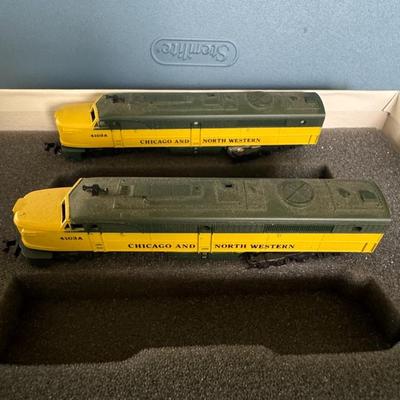
Kato "N" Scale EMD E-8 model train set, featuring a powered A unit and a dummy A unit The set is numbered 2703 and is in the Chicago & Northwestern livery This particular model is based on the EMD E8A diesel locomotive, visually similar to the E9A. These E-units were used in passenger service during the 1950s and 70s, with some still in use for museum or excursion service today. Key features of this model set include: Powered A & Dummy A units: Allows for realistic operation of a lead and trailing locomotive. Chicago & Northwestern livery: Features the iconic paint scheme of this classic railroad. N Scale: A popular scale for model railroading, known for its smaller size. DCC friendly: The locomotives are designed to be easily converted to Digital Command Control (DCC) if desired. 406 / 1369 -
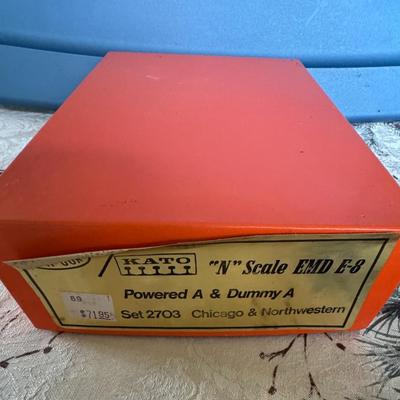
Kato "N" Scale EMD E-8 model train set, featuring a powered A unit and a dummy A unit The set is numbered 2703 and is in the Chicago & Northwestern livery This particular model is based on the EMD E8A diesel locomotive, visually similar to the E9A. These E-units were used in passenger service during the 1950s and 70s, with some still in use for museum or excursion service today. Key features of this model set include: Powered A & Dummy A units: Allows for realistic operation of a lead and trailing locomotive. Chicago & Northwestern livery: Features the iconic paint scheme of this classic railroad. N Scale: A popular scale for model railroading, known for its smaller size. DCC friendly: The locomotives are designed to be easily converted to Digital Command Control (DCC) if desired. 407 / 1369 -
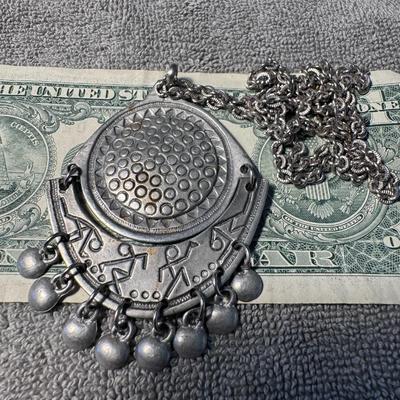
Vintage EH Eivind Hillestad Norway Modernist Pewter Pendant Necklace. Here's more information about this type of piece: Designer & Origin: This necklace is a vintage piece by Eivind Hillestad, a Norwegian jewelry designer who founded a family business with his wife Borghild in 1965. These pieces are marked with "EH" and often "Norway Pewter" or similar markings. Material and Style: It's crafted from pewter, a metal that gives it a silver-like appearance, and is characteristic of the Mid-Century Modernist movement, often featuring abstract designs and clean lines. Collectibility: Eivind Hillestad's designs are recognized as authentic Scandinavian Modernist jewelry from the 1960s and 70s, making them collectible items for enthusiasts of Nordic design and vintage jewelry. 411 / 1369 -
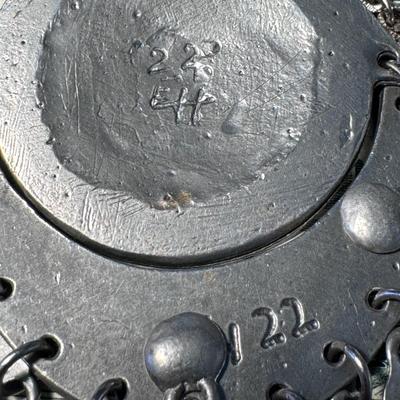
Vintage EH Eivind Hillestad Norway Modernist Pewter Pendant Necklace. Here's more information about this type of piece: Designer & Origin: This necklace is a vintage piece by Eivind Hillestad, a Norwegian jewelry designer who founded a family business with his wife Borghild in 1965. These pieces are marked with "EH" and often "Norway Pewter" or similar markings. Material and Style: It's crafted from pewter, a metal that gives it a silver-like appearance, and is characteristic of the Mid-Century Modernist movement, often featuring abstract designs and clean lines. Collectibility: Eivind Hillestad's designs are recognized as authentic Scandinavian Modernist jewelry from the 1960s and 70s, making them collectible items for enthusiasts of Nordic design and vintage jewelry. 412 / 1369 -
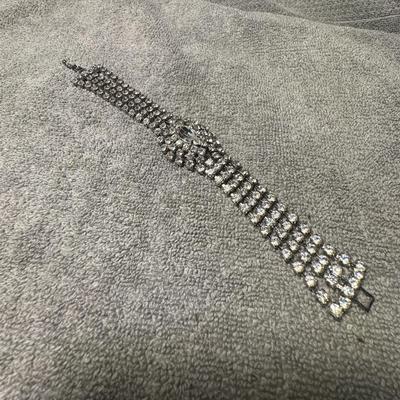
rhinestone bracelet, featuring multiple rows of clear, sparkling rhinestones and a central embellishment with a larger, possibly emerald-cut, stone. Here's more information about this style of jewelry: Materials: This type of bracelet typically consists of clear glass rhinestones set in a silver-toned base metal, which can include rhodium-plated settings. Design: The bracelet prominently displays multiple rows of prong-set rhinestones, giving it a wide and elaborate appearance, characteristic of vintage or statement jewelry. Era and Style: Similar designs are often associated with mid-century styles, specifically the 1940s-1970s, and are often referred to as "vintage" or "estate jewelry". 413 / 1369 -
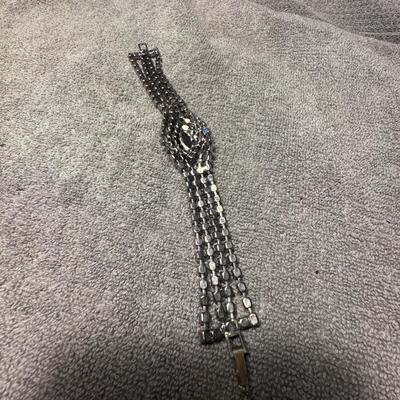
rhinestone bracelet, featuring multiple rows of clear, sparkling rhinestones and a central embellishment with a larger, possibly emerald-cut, stone. Here's more information about this style of jewelry: Materials: This type of bracelet typically consists of clear glass rhinestones set in a silver-toned base metal, which can include rhodium-plated settings. Design: The bracelet prominently displays multiple rows of prong-set rhinestones, giving it a wide and elaborate appearance, characteristic of vintage or statement jewelry. Era and Style: Similar designs are often associated with mid-century styles, specifically the 1940s-1970s, and are often referred to as "vintage" or "estate jewelry". 414 / 1369 -
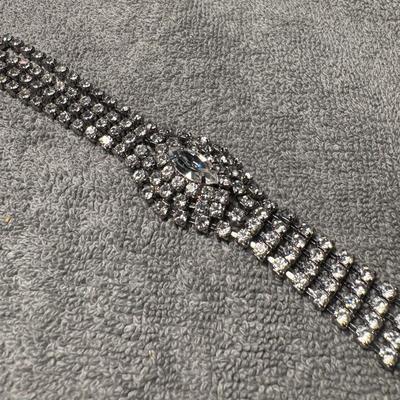
rhinestone bracelet, featuring multiple rows of clear, sparkling rhinestones and a central embellishment with a larger, possibly emerald-cut, stone. Here's more information about this style of jewelry: Materials: This type of bracelet typically consists of clear glass rhinestones set in a silver-toned base metal, which can include rhodium-plated settings. Design: The bracelet prominently displays multiple rows of prong-set rhinestones, giving it a wide and elaborate appearance, characteristic of vintage or statement jewelry. Era and Style: Similar designs are often associated with mid-century styles, specifically the 1940s-1970s, and are often referred to as "vintage" or "estate jewelry". 415 / 1369 -
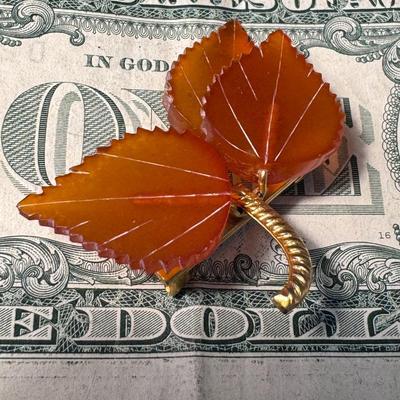
Vintage Baltic Amber Leaf Brooch, likely featuring a gold-toned setting and carved amber leaves. These brooches often contain authentic Baltic amber, known for its warm, natural hues, and are frequently found in vintage or antique jewelry markets. Here's more information about this type of brooch: Materials: Typically crafted with natural Baltic amber, often set in gold-plated brass or sterling silver, and shaped into detailed leaf motifs with carved veins. Origin: Many vintage amber leaf brooches, particularly those with a multi-leaf design, originate from regions like the Baltic states or former Soviet Union countries, such as the Kaliningrad Amber Combine in the USSR. Aesthetic: These brooches often embody a classic or Art Nouveau style, adding a touch of vintage elegance to any outfit. Collectibility: Vintage amber jewelry, especially pieces with unique designs like this leaf brooch, is sought after by collectors and enthusiasts of natural gemstone and antique jewelry. 416 / 1369 -
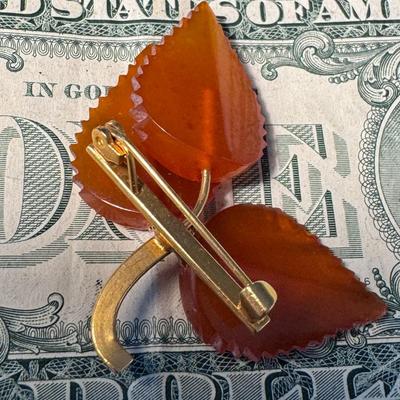
Vintage Baltic Amber Leaf Brooch, likely featuring a gold-toned setting and carved amber leaves. These brooches often contain authentic Baltic amber, known for its warm, natural hues, and are frequently found in vintage or antique jewelry markets. Here's more information about this type of brooch: Materials: Typically crafted with natural Baltic amber, often set in gold-plated brass or sterling silver, and shaped into detailed leaf motifs with carved veins. Origin: Many vintage amber leaf brooches, particularly those with a multi-leaf design, originate from regions like the Baltic states or former Soviet Union countries, such as the Kaliningrad Amber Combine in the USSR. Aesthetic: These brooches often embody a classic or Art Nouveau style, adding a touch of vintage elegance to any outfit. Collectibility: Vintage amber jewelry, especially pieces with unique designs like this leaf brooch, is sought after by collectors and enthusiasts of natural gemstone and antique jewelry. 417 / 1369 -
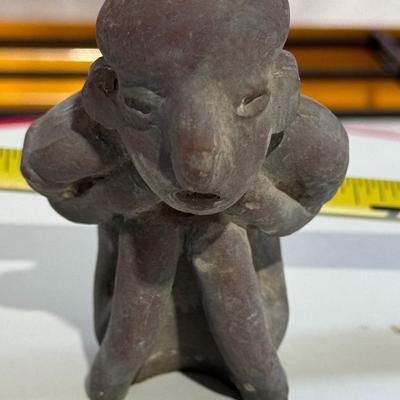
Shering Etrafon Portrait of Asthmatic Attack Nyarit Pharmaceutical Promotional Item Figurine. Here's more information about this unique collectible: Origin and Purpose: This figurine is a vintage pharmaceutical promotional item given to doctors by Schering pharmaceutical sales representatives in the 1960s-1970s to promote their products, specifically Celestone Tablets (brand of Betamethasone). Design and Material: It's a reproduction of a Pre-Columbian Nayarit figure from Mexico, dating back to approximately 400-800 A.D.. The figurine depicts an individual experiencing an asthmatic attack and is typically made of terra cotta-type material mounted on a wooden base with advertising text. 425 / 1369 -
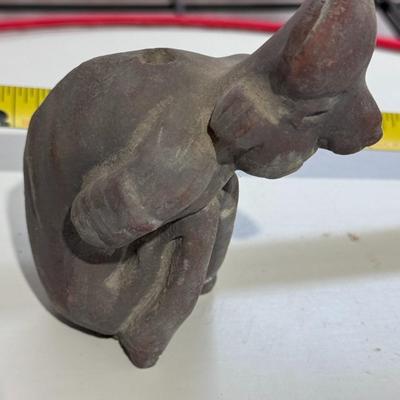
Shering Etrafon Portrait of Asthmatic Attack Nyarit Pharmaceutical Promotional Item Figurine. Here's more information about this unique collectible: Origin and Purpose: This figurine is a vintage pharmaceutical promotional item given to doctors by Schering pharmaceutical sales representatives in the 1960s-1970s to promote their products, specifically Celestone Tablets (brand of Betamethasone). Design and Material: It's a reproduction of a Pre-Columbian Nayarit figure from Mexico, dating back to approximately 400-800 A.D.. The figurine depicts an individual experiencing an asthmatic attack and is typically made of terra cotta-type material mounted on a wooden base with advertising text. 426 / 1369 -
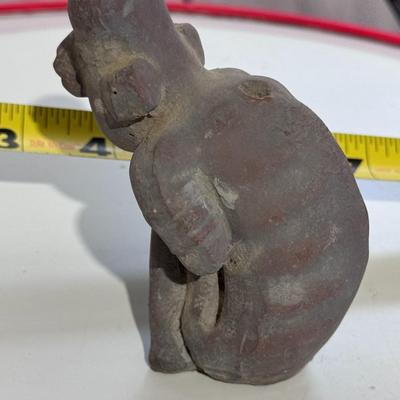
Shering Etrafon Portrait of Asthmatic Attack Nyarit Pharmaceutical Promotional Item Figurine. Here's more information about this unique collectible: Origin and Purpose: This figurine is a vintage pharmaceutical promotional item given to doctors by Schering pharmaceutical sales representatives in the 1960s-1970s to promote their products, specifically Celestone Tablets (brand of Betamethasone). Design and Material: It's a reproduction of a Pre-Columbian Nayarit figure from Mexico, dating back to approximately 400-800 A.D.. The figurine depicts an individual experiencing an asthmatic attack and is typically made of terra cotta-type material mounted on a wooden base with advertising text. 427 / 1369 -
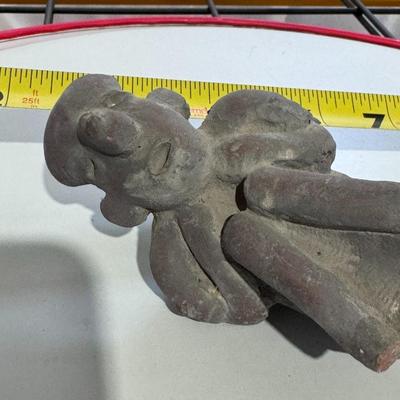
Shering Etrafon Portrait of Asthmatic Attack Nyarit Pharmaceutical Promotional Item Figurine. Here's more information about this unique collectible: Origin and Purpose: This figurine is a vintage pharmaceutical promotional item given to doctors by Schering pharmaceutical sales representatives in the 1960s-1970s to promote their products, specifically Celestone Tablets (brand of Betamethasone). Design and Material: It's a reproduction of a Pre-Columbian Nayarit figure from Mexico, dating back to approximately 400-800 A.D.. The figurine depicts an individual experiencing an asthmatic attack and is typically made of terra cotta-type material mounted on a wooden base with advertising text. 428 / 1369 -
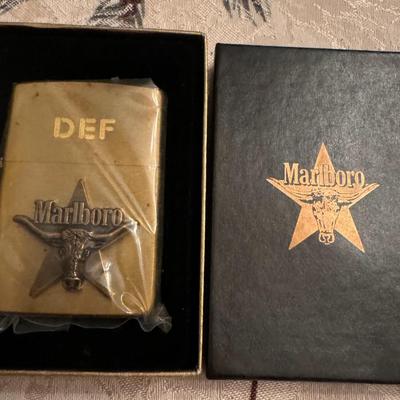
Marlboro Zippo lighter, possibly from 1991, featuring a Longhorn Bull and Star logo. The lighter also has an engraving of the letters "DEF". It is made of brass and comes in a box with the Marlboro logo. These lighters were often used as promotional items for Marlboro cigarettes. Some similar lighters may have been modified with personalized engravings. 429 / 1369 -
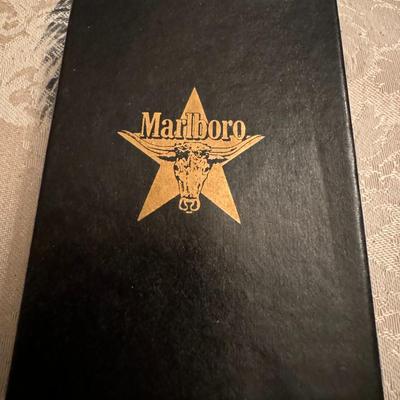
Marlboro Zippo lighter, possibly from 1991, featuring a Longhorn Bull and Star logo. The lighter also has an engraving of the letters "DEF". It is made of brass and comes in a box with the Marlboro logo. These lighters were often used as promotional items for Marlboro cigarettes. Some similar lighters may have been modified with personalized engravings. 430 / 1369 -
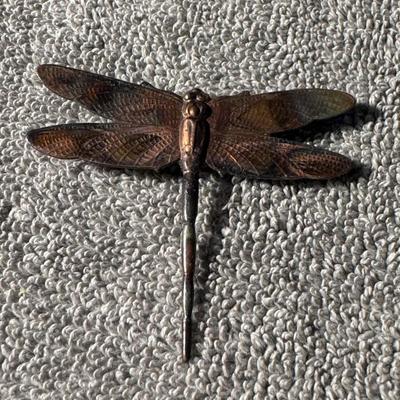
Antique Bronze dragonfly brooch , very old 431 / 1369 -
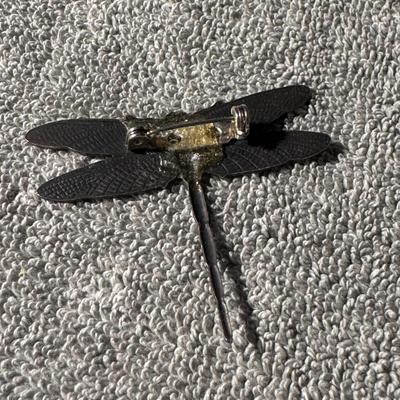
Antique Bronze dragonfly brooch , very old 432 / 1369 -
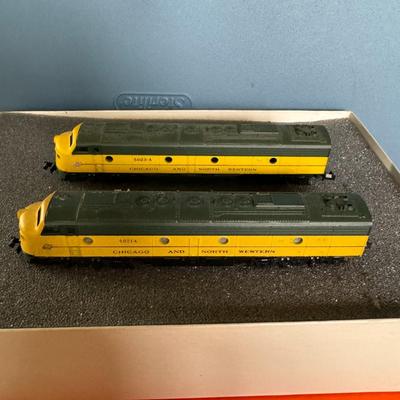
Con-Cor N Scale EMD E-8 diesel engine set, specifically Set 2703 of the Chicago & Northwestern railroad. The set includes both a powered A unit and a dummy A unit. The box indicates it was manufactured by Con-Cor using Kato components. According to one listing, it's a multicolor plastic locomotive in excellent working order, graded C-8 It is designed to resemble the EMD E-8 Powered A Unit of the Chicago & Northwestern railroad, with a scale of 1:160. The mechanism, made by Kato, features a five-pole motor, dual flywheels, all-wheel electrical pickup, a heavy die-cast metal chassis, and Kato magnetic knuckle couplers. 433 / 1369 -
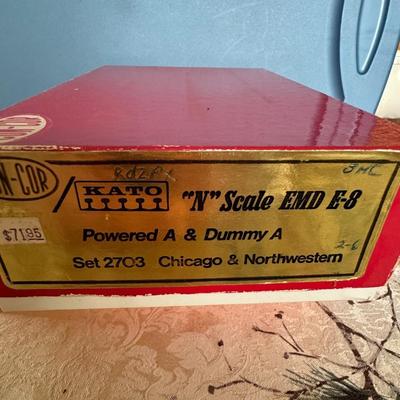
Con-Cor N Scale EMD E-8 diesel engine set, specifically Set 2703 of the Chicago & Northwestern railroad. The set includes both a powered A unit and a dummy A unit. The box indicates it was manufactured by Con-Cor using Kato components. According to one listing, it's a multicolor plastic locomotive in excellent working order, graded C-8 It is designed to resemble the EMD E-8 Powered A Unit of the Chicago & Northwestern railroad, with a scale of 1:160. The mechanism, made by Kato, features a five-pole motor, dual flywheels, all-wheel electrical pickup, a heavy die-cast metal chassis, and Kato magnetic knuckle couplers. 434 / 1369 -
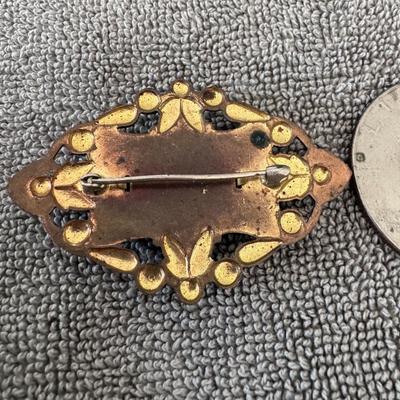
vintage Art Nouveau or Art Deco style brooch featuring a central oval green cabochon stone. Here's more information about this type of piece: Style and Period: The design, with its ornate metalwork and enamel accents, suggests it likely dates to the Art Nouveau (late 19th - early 20th century) or Art Deco (1920s-1930s) periods, known for their elaborate and nature-inspired designs or geometric patterns. Materials: The central green stone is a cabochon, often made of glass or celluloid in vintage pieces, sometimes simulating more precious stones like jade. The surrounding decorative elements appear to be enamel in shades of green, yellow, and blue, set in a gold-tone metal, likely brass. 435 / 1369 -
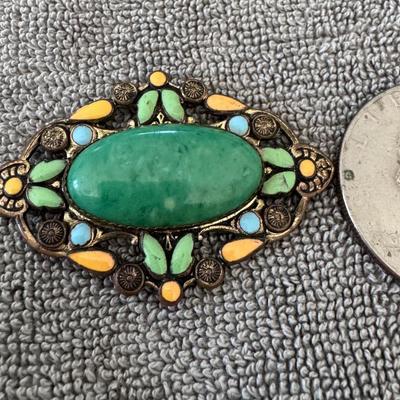
vintage Art Nouveau or Art Deco style brooch featuring a central oval green cabochon stone. Here's more information about this type of piece: Style and Period: The design, with its ornate metalwork and enamel accents, suggests it likely dates to the Art Nouveau (late 19th - early 20th century) or Art Deco (1920s-1930s) periods, known for their elaborate and nature-inspired designs or geometric patterns. Materials: The central green stone is a cabochon, often made of glass or celluloid in vintage pieces, sometimes simulating more precious stones like jade. The surrounding decorative elements appear to be enamel in shades of green, yellow, and blue, set in a gold-tone metal, likely brass. 436 / 1369 -

The "Big Red" nickname was originally given to the Parker Duofold fountain pen, introduced in 1921, which featured a striking orange-red hard rubber. A lower-end pen, also called "Big Red", was released in 1970. This ballpoint pen was produced from 1970 to 1981 and was quite popular, with over 27 million units sold by 1980. The pen shown in the image is green, a less common color variation of the "Big Red" ballpoint pens. 437 / 1369 -
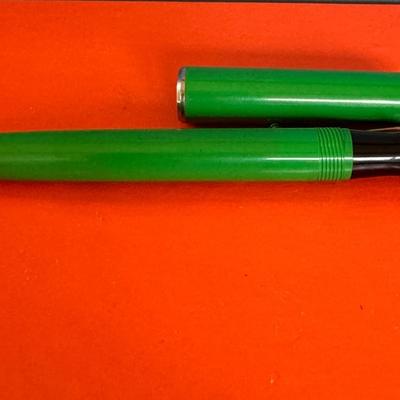
The "Big Red" nickname was originally given to the Parker Duofold fountain pen, introduced in 1921, which featured a striking orange-red hard rubber. A lower-end pen, also called "Big Red", was released in 1970. This ballpoint pen was produced from 1970 to 1981 and was quite popular, with over 27 million units sold by 1980. The pen shown in the image is green, a less common color variation of the "Big Red" ballpoint pens. 438 / 1369 -
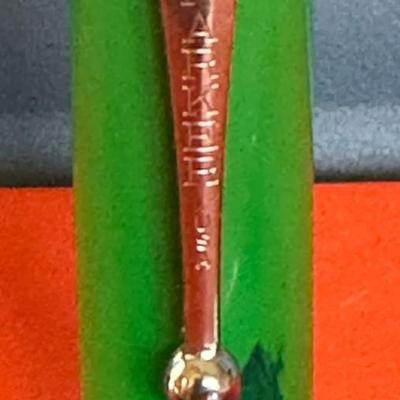
The "Big Red" nickname was originally given to the Parker Duofold fountain pen, introduced in 1921, which featured a striking orange-red hard rubber. A lower-end pen, also called "Big Red", was released in 1970. This ballpoint pen was produced from 1970 to 1981 and was quite popular, with over 27 million units sold by 1980. The pen shown in the image is green, a less common color variation of the "Big Red" ballpoint pens. 439 / 1369 -
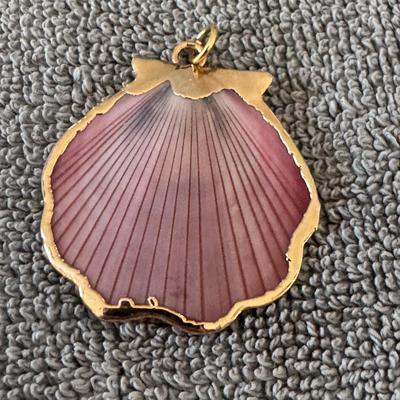
seashell pendant with a gold trim, often referred to as a gold-edged shell pendant or gold-trimmed seashell jewelry. These decorative items are typically made from natural seashells that have been enhanced with a metallic edge, often gold or gold-plated, and include a bail for hanging on a necklace or bracelet. Key features and information: Material: It is a natural seashell, possibly a clam or scallop, with a gold or gold-plated trim. The shell in the image appears to have natural color variations, including purple hues. Purpose: These are primarily used as pendants for necklaces, charms for bracelets, or as decorative elements in other jewelry pieces. Availability: Similar seashell pendants with gold trim can be found for sale on various online marketplaces like Etsy, eBay, and Amazon, often categorized under "beach jewelry," "nautical jewelry," or "shell jewelry". 444 / 1369 -
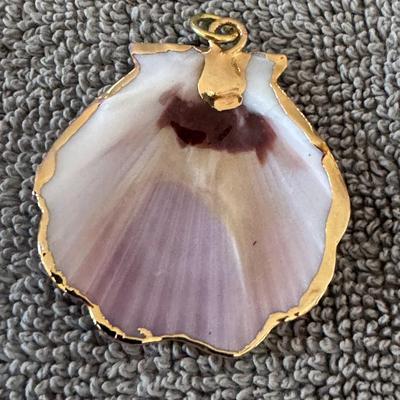
seashell pendant with a gold trim, often referred to as a gold-edged shell pendant or gold-trimmed seashell jewelry. These decorative items are typically made from natural seashells that have been enhanced with a metallic edge, often gold or gold-plated, and include a bail for hanging on a necklace or bracelet. Key features and information: Material: It is a natural seashell, possibly a clam or scallop, with a gold or gold-plated trim. The shell in the image appears to have natural color variations, including purple hues. Purpose: These are primarily used as pendants for necklaces, charms for bracelets, or as decorative elements in other jewelry pieces. Availability: Similar seashell pendants with gold trim can be found for sale on various online marketplaces like Etsy, eBay, and Amazon, often categorized under "beach jewelry," "nautical jewelry," or "shell jewelry". 445 / 1369 -
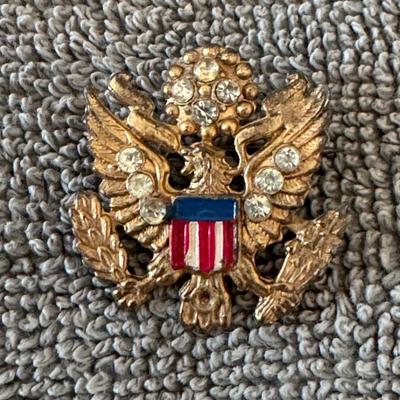
US Army Eagle Pin, likely a piece of "sweetheart jewelry" from the World War II era. Details about the pin: Identity: It's a patriotic brooch or pin featuring the American bald eagle emblem, often associated with the US Army. Historical Context: These pins, sometimes made by companies like Trifari, were popular during WWII and served as "sweetheart jewelry," bought by service members or their loved ones to express patriotism and connection during wartime. 446 / 1369 -
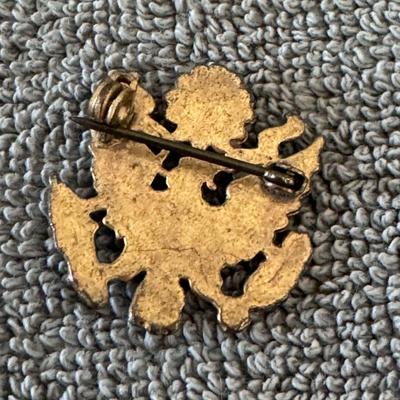
US Army Eagle Pin, likely a piece of "sweetheart jewelry" from the World War II era. Details about the pin: Identity: It's a patriotic brooch or pin featuring the American bald eagle emblem, often associated with the US Army. Historical Context: These pins, sometimes made by companies like Trifari, were popular during WWII and served as "sweetheart jewelry," bought by service members or their loved ones to express patriotism and connection during wartime. 447 / 1369 -
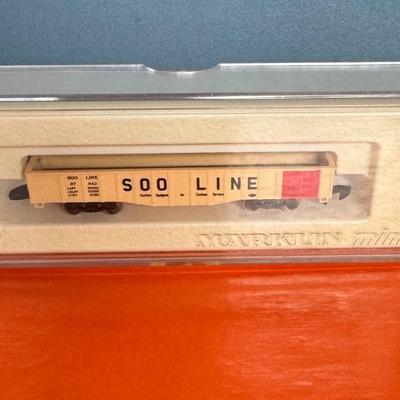
Märklin Z Scale Model 8642 Soo Line Gondola Train Car. It is described as a freight car with a durable plastic body, intricate detailing, metal wheels and axles, and fish-hook style couplers. The model is graded C-9: Factory New, meaning it shows very minor signs of handling and no signs of wheel wear. It comes with the original box and liners. This particular model is part of Märklin's Mini-Club Z scale range. Z scale is the smallest commercially available model train scale, at 1:220. It was introduced by Märklin in 1972. You can find offers for this item online, including on eBay and Trainz.com. The price varies depending on the seller and condition. Here are some additional details: Item number: 8642 Road name: SOO Line (SOO) Corporate roadname: SOO Line Railroad Scale: 1:220 (Z Gauge) Features: MTL Couplers 448 / 1369 -
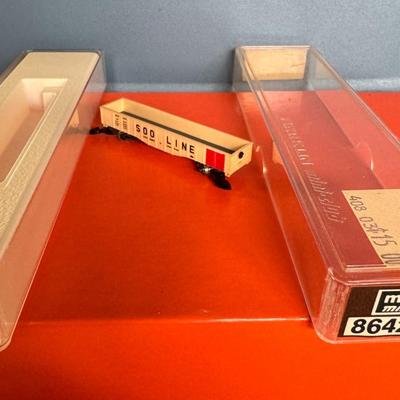
Märklin Z Scale Model 8642 Soo Line Gondola Train Car. It is described as a freight car with a durable plastic body, intricate detailing, metal wheels and axles, and fish-hook style couplers. The model is graded C-9: Factory New, meaning it shows very minor signs of handling and no signs of wheel wear. It comes with the original box and liners. This particular model is part of Märklin's Mini-Club Z scale range. Z scale is the smallest commercially available model train scale, at 1:220. It was introduced by Märklin in 1972. You can find offers for this item online, including on eBay and Trainz.com. The price varies depending on the seller and condition. Here are some additional details: Item number: 8642 Road name: SOO Line (SOO) Corporate roadname: SOO Line Railroad Scale: 1:220 (Z Gauge) Features: MTL Couplers 449 / 1369 -
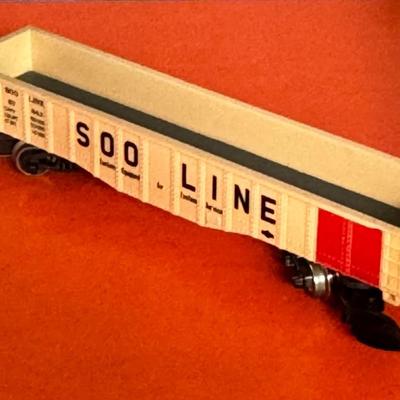
Märklin Z Scale Model 8642 Soo Line Gondola Train Car. It is described as a freight car with a durable plastic body, intricate detailing, metal wheels and axles, and fish-hook style couplers. The model is graded C-9: Factory New, meaning it shows very minor signs of handling and no signs of wheel wear. It comes with the original box and liners. This particular model is part of Märklin's Mini-Club Z scale range. Z scale is the smallest commercially available model train scale, at 1:220. It was introduced by Märklin in 1972. You can find offers for this item online, including on eBay and Trainz.com. The price varies depending on the seller and condition. Here are some additional details: Item number: 8642 Road name: SOO Line (SOO) Corporate roadname: SOO Line Railroad Scale: 1:220 (Z Gauge) Features: MTL Couplers 450 / 1369 -
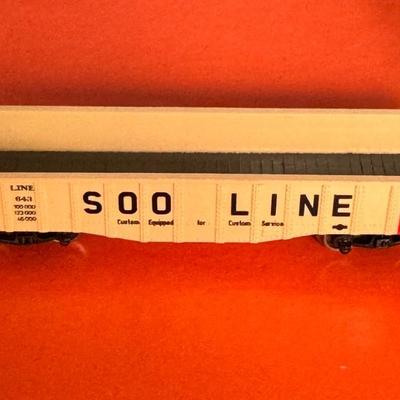
Märklin Z Scale Model 8642 Soo Line Gondola Train Car. It is described as a freight car with a durable plastic body, intricate detailing, metal wheels and axles, and fish-hook style couplers. The model is graded C-9: Factory New, meaning it shows very minor signs of handling and no signs of wheel wear. It comes with the original box and liners. This particular model is part of Märklin's Mini-Club Z scale range. Z scale is the smallest commercially available model train scale, at 1:220. It was introduced by Märklin in 1972. You can find offers for this item online, including on eBay and Trainz.com. The price varies depending on the seller and condition. Here are some additional details: Item number: 8642 Road name: SOO Line (SOO) Corporate roadname: SOO Line Railroad Scale: 1:220 (Z Gauge) Features: MTL Couplers 451 / 1369 -
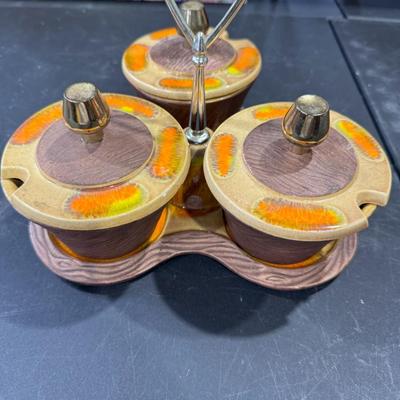
Mid-Century Modern (MCM) condiment or relish caddy. Here's more information about this type of item: Design & Era: This piece features the distinctive "brown drip glaze" common in California Pottery and other ceramic ware from the 1960s, reflecting the Mid-Century Modern aesthetic. Components: It typically consists of multiple lidded ceramic jars or bowls designed to hold various condiments, sauces, or relishes, all housed within a central caddy, often made of metal with a handle for easy carrying. Functionality: These sets were popular for serving appetizers, picnic condiments, or even as decorative pieces for nuts, candies, or other small items on a dining or coffee table. Collectibility: Vintage ceramic condiment sets, especially those with unique glazes or from notable pottery studios, are collectible items for enthusiasts of MCM decor and vintage kitchenware. 452 / 1369 -
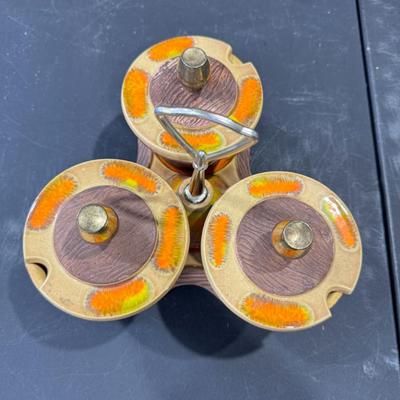
Mid-Century Modern (MCM) condiment or relish caddy. Here's more information about this type of item: Design & Era: This piece features the distinctive "brown drip glaze" common in California Pottery and other ceramic ware from the 1960s, reflecting the Mid-Century Modern aesthetic. Components: It typically consists of multiple lidded ceramic jars or bowls designed to hold various condiments, sauces, or relishes, all housed within a central caddy, often made of metal with a handle for easy carrying. Functionality: These sets were popular for serving appetizers, picnic condiments, or even as decorative pieces for nuts, candies, or other small items on a dining or coffee table. Collectibility: Vintage ceramic condiment sets, especially those with unique glazes or from notable pottery studios, are collectible items for enthusiasts of MCM decor and vintage kitchenware. 453 / 1369 -
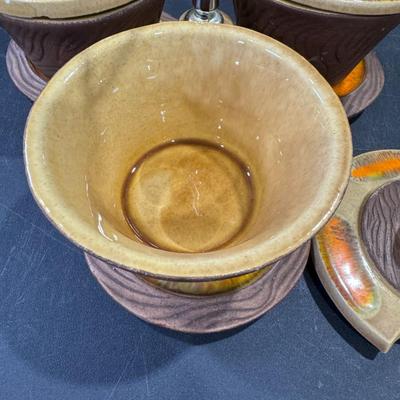
Mid-Century Modern (MCM) condiment or relish caddy. Here's more information about this type of item: Design & Era: This piece features the distinctive "brown drip glaze" common in California Pottery and other ceramic ware from the 1960s, reflecting the Mid-Century Modern aesthetic. Components: It typically consists of multiple lidded ceramic jars or bowls designed to hold various condiments, sauces, or relishes, all housed within a central caddy, often made of metal with a handle for easy carrying. Functionality: These sets were popular for serving appetizers, picnic condiments, or even as decorative pieces for nuts, candies, or other small items on a dining or coffee table. Collectibility: Vintage ceramic condiment sets, especially those with unique glazes or from notable pottery studios, are collectible items for enthusiasts of MCM decor and vintage kitchenware. 454 / 1369 -
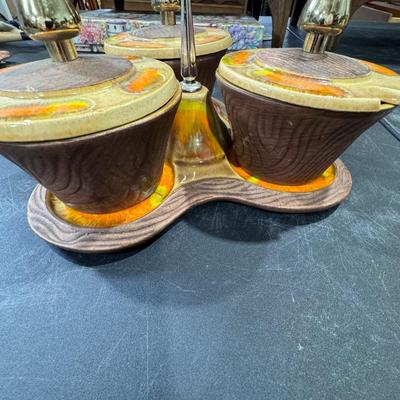
Mid-Century Modern (MCM) condiment or relish caddy. Here's more information about this type of item: Design & Era: This piece features the distinctive "brown drip glaze" common in California Pottery and other ceramic ware from the 1960s, reflecting the Mid-Century Modern aesthetic. Components: It typically consists of multiple lidded ceramic jars or bowls designed to hold various condiments, sauces, or relishes, all housed within a central caddy, often made of metal with a handle for easy carrying. Functionality: These sets were popular for serving appetizers, picnic condiments, or even as decorative pieces for nuts, candies, or other small items on a dining or coffee table. Collectibility: Vintage ceramic condiment sets, especially those with unique glazes or from notable pottery studios, are collectible items for enthusiasts of MCM decor and vintage kitchenware. 455 / 1369 -
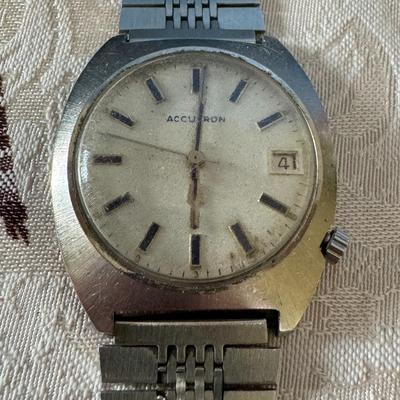
The image shows a Bulova Accutron watch. Accutron watches were a significant innovation in watchmaking history, known for their tuning fork movement. Here's what makes them special: Tuning Fork Movement: Instead of a traditional balance wheel, Accutron watches used a small tuning fork that vibrated at 360 times per second, powered by a battery. This high frequency resulted in remarkable accuracy for its time, achieving precision of one minute per month. This technology also produced a unique, subtle humming sound instead of a ticking sound. Historical Significance: Accutron watches were the first fully electronic watches. They played a crucial role in the U.S. space program, with Accutron timers even being placed on the moon. They were also adopted by various railroad companies for their precision. "Spaceview" Design: Some early Accutron models featured a "Spaceview" design, where the dial was removed to showcase the innovative tuning fork movement and circuitry within. This design became highly popular. 456 / 1369 -
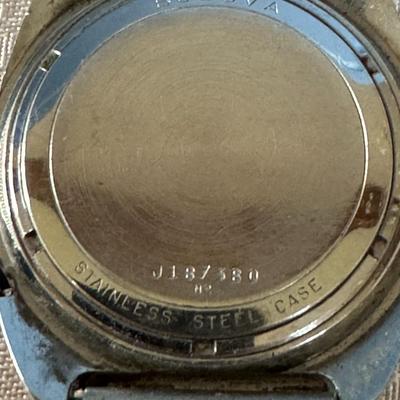
The image shows a Bulova Accutron watch. Accutron watches were a significant innovation in watchmaking history, known for their tuning fork movement. Here's what makes them special: Tuning Fork Movement: Instead of a traditional balance wheel, Accutron watches used a small tuning fork that vibrated at 360 times per second, powered by a battery. This high frequency resulted in remarkable accuracy for its time, achieving precision of one minute per month. This technology also produced a unique, subtle humming sound instead of a ticking sound. Historical Significance: Accutron watches were the first fully electronic watches. They played a crucial role in the U.S. space program, with Accutron timers even being placed on the moon. They were also adopted by various railroad companies for their precision. "Spaceview" Design: Some early Accutron models featured a "Spaceview" design, where the dial was removed to showcase the innovative tuning fork movement and circuitry within. This design became highly popular. 457 / 1369 -
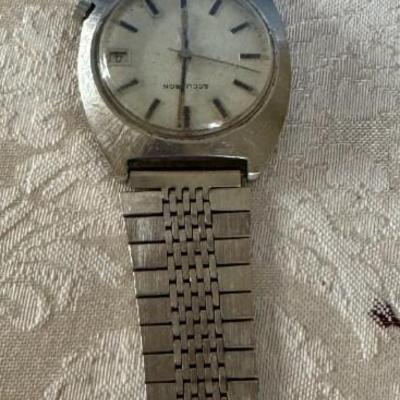
The image shows a Bulova Accutron watch. Accutron watches were a significant innovation in watchmaking history, known for their tuning fork movement. Here's what makes them special: Tuning Fork Movement: Instead of a traditional balance wheel, Accutron watches used a small tuning fork that vibrated at 360 times per second, powered by a battery. This high frequency resulted in remarkable accuracy for its time, achieving precision of one minute per month. This technology also produced a unique, subtle humming sound instead of a ticking sound. Historical Significance: Accutron watches were the first fully electronic watches. They played a crucial role in the U.S. space program, with Accutron timers even being placed on the moon. They were also adopted by various railroad companies for their precision. "Spaceview" Design: Some early Accutron models featured a "Spaceview" design, where the dial was removed to showcase the innovative tuning fork movement and circuitry within. This design became highly popular. 458 / 1369 -
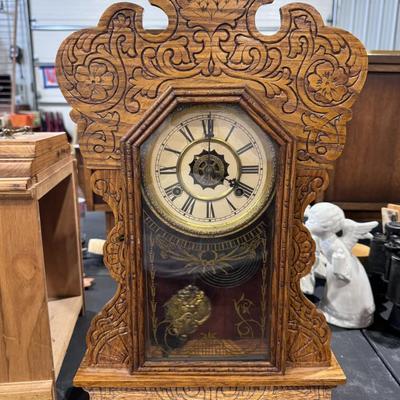
the "gingerbread" clocks produced by the Waterbury Clock Company, likely from the late 19th or early 20th century, possibly the "Festus" model. Here's some information about these clocks: Manufacturer: The Waterbury Clock Company, founded in 1857 in Waterbury, Connecticut, was a prominent American clock manufacturer known for its diverse range of clocks, including popular mantel clocks and the famous "dollar watches". The company later evolved into the Timex Corporation. Style and Features: Waterbury mantel clocks, especially those in the "gingerbread" style like the one pictured, typically feature ornate wooden cases with intricate designs, often reflecting Victorian-era aesthetics. They house 8-day brass movements, and many models, including those similar to the one in the image, also included chime mechanisms that struck on the hour and half-hour. Historical Significance: These clocks were a common feature in middle-class American homes during their production era, valued for their craftsmanship and reliable timekeeping, and are now considered cherished antiques. 459 / 1369 -
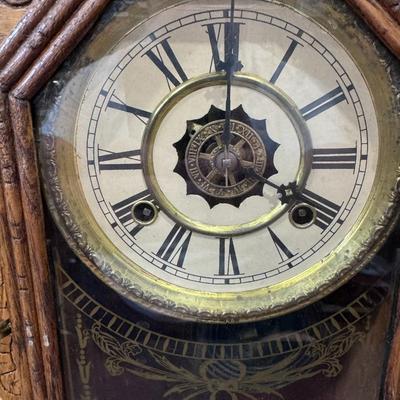
the "gingerbread" clocks produced by the Waterbury Clock Company, likely from the late 19th or early 20th century, possibly the "Festus" model. Here's some information about these clocks: Manufacturer: The Waterbury Clock Company, founded in 1857 in Waterbury, Connecticut, was a prominent American clock manufacturer known for its diverse range of clocks, including popular mantel clocks and the famous "dollar watches". The company later evolved into the Timex Corporation. Style and Features: Waterbury mantel clocks, especially those in the "gingerbread" style like the one pictured, typically feature ornate wooden cases with intricate designs, often reflecting Victorian-era aesthetics. They house 8-day brass movements, and many models, including those similar to the one in the image, also included chime mechanisms that struck on the hour and half-hour. Historical Significance: These clocks were a common feature in middle-class American homes during their production era, valued for their craftsmanship and reliable timekeeping, and are now considered cherished antiques. 460 / 1369 -
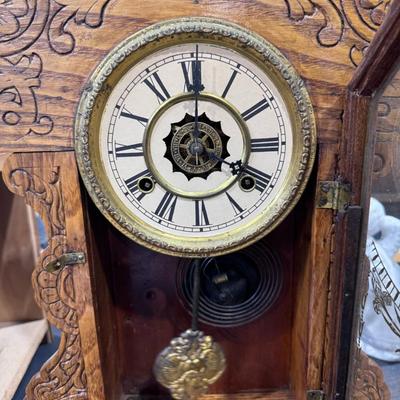
the "gingerbread" clocks produced by the Waterbury Clock Company, likely from the late 19th or early 20th century, possibly the "Festus" model. Here's some information about these clocks: Manufacturer: The Waterbury Clock Company, founded in 1857 in Waterbury, Connecticut, was a prominent American clock manufacturer known for its diverse range of clocks, including popular mantel clocks and the famous "dollar watches". The company later evolved into the Timex Corporation. Style and Features: Waterbury mantel clocks, especially those in the "gingerbread" style like the one pictured, typically feature ornate wooden cases with intricate designs, often reflecting Victorian-era aesthetics. They house 8-day brass movements, and many models, including those similar to the one in the image, also included chime mechanisms that struck on the hour and half-hour. Historical Significance: These clocks were a common feature in middle-class American homes during their production era, valued for their craftsmanship and reliable timekeeping, and are now considered cherished antiques. 461 / 1369 -
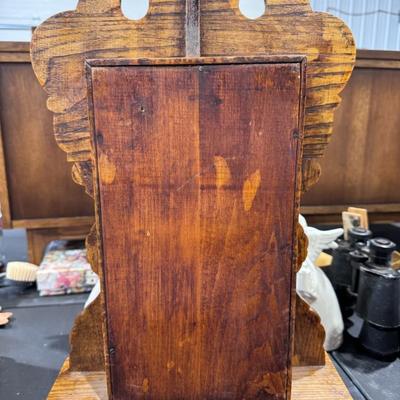
the "gingerbread" clocks produced by the Waterbury Clock Company, likely from the late 19th or early 20th century, possibly the "Festus" model. Here's some information about these clocks: Manufacturer: The Waterbury Clock Company, founded in 1857 in Waterbury, Connecticut, was a prominent American clock manufacturer known for its diverse range of clocks, including popular mantel clocks and the famous "dollar watches". The company later evolved into the Timex Corporation. Style and Features: Waterbury mantel clocks, especially those in the "gingerbread" style like the one pictured, typically feature ornate wooden cases with intricate designs, often reflecting Victorian-era aesthetics. They house 8-day brass movements, and many models, including those similar to the one in the image, also included chime mechanisms that struck on the hour and half-hour. Historical Significance: These clocks were a common feature in middle-class American homes during their production era, valued for their craftsmanship and reliable timekeeping, and are now considered cherished antiques. 462 / 1369 -
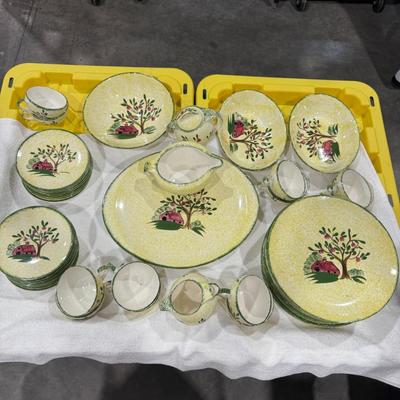
Large set, each piece has been checked for damage. Blue Ridge Southern Pottery in the "Weathervane" pattern. Here's more about this collectible set: Pattern Design: The "Weathervane" pattern features a distinct hand-painted design of a red barn and an apple tree, set against a characteristic yellow sponged background and accented with green trim. Manufacturer & Origin: These pieces were produced by Southern Potteries Inc. of Erwin, Tennessee, under the "Blue Ridge" brand. Production Era: The "Weathervane" pattern was manufactured from the late 1930s into the 1950s. Status: This pattern is now discontinued, making it a sought-after item for collectors. 470 / 1369 -
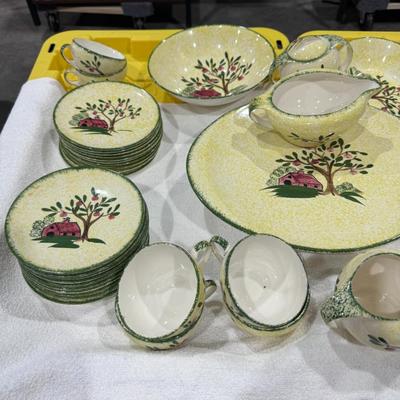
Large set, each piece has been checked for damage. Blue Ridge Southern Pottery in the "Weathervane" pattern. Here's more about this collectible set: Pattern Design: The "Weathervane" pattern features a distinct hand-painted design of a red barn and an apple tree, set against a characteristic yellow sponged background and accented with green trim. Manufacturer & Origin: These pieces were produced by Southern Potteries Inc. of Erwin, Tennessee, under the "Blue Ridge" brand. Production Era: The "Weathervane" pattern was manufactured from the late 1930s into the 1950s. Status: This pattern is now discontinued, making it a sought-after item for collectors. 471 / 1369 -
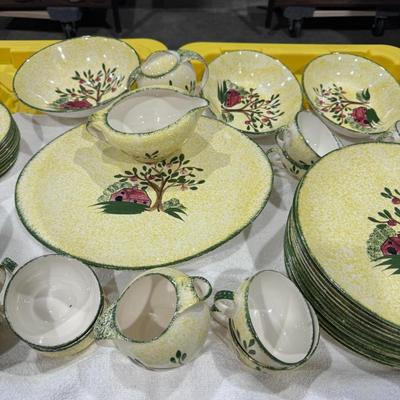
Large set, each piece has been checked for damage. Blue Ridge Southern Pottery in the "Weathervane" pattern. Here's more about this collectible set: Pattern Design: The "Weathervane" pattern features a distinct hand-painted design of a red barn and an apple tree, set against a characteristic yellow sponged background and accented with green trim. Manufacturer & Origin: These pieces were produced by Southern Potteries Inc. of Erwin, Tennessee, under the "Blue Ridge" brand. Production Era: The "Weathervane" pattern was manufactured from the late 1930s into the 1950s. Status: This pattern is now discontinued, making it a sought-after item for collectors. 472 / 1369 -
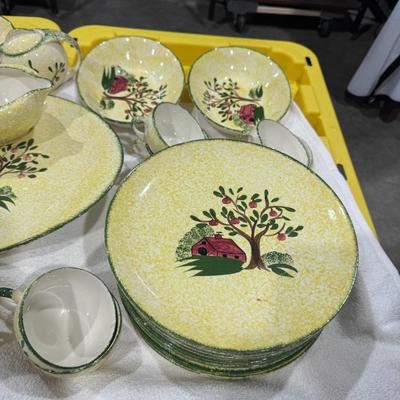
Large set, each piece has been checked for damage. Blue Ridge Southern Pottery in the "Weathervane" pattern. Here's more about this collectible set: Pattern Design: The "Weathervane" pattern features a distinct hand-painted design of a red barn and an apple tree, set against a characteristic yellow sponged background and accented with green trim. Manufacturer & Origin: These pieces were produced by Southern Potteries Inc. of Erwin, Tennessee, under the "Blue Ridge" brand. Production Era: The "Weathervane" pattern was manufactured from the late 1930s into the 1950s. Status: This pattern is now discontinued, making it a sought-after item for collectors. 473 / 1369 -
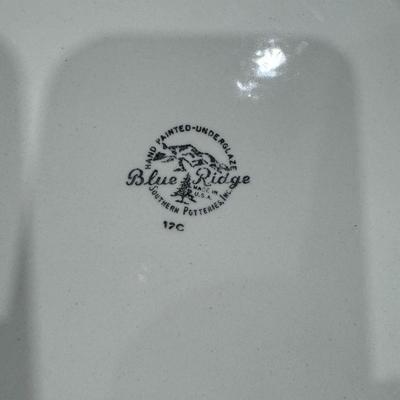
Large set, each piece has been checked for damage. Blue Ridge Southern Pottery in the "Weathervane" pattern. Here's more about this collectible set: Pattern Design: The "Weathervane" pattern features a distinct hand-painted design of a red barn and an apple tree, set against a characteristic yellow sponged background and accented with green trim. Manufacturer & Origin: These pieces were produced by Southern Potteries Inc. of Erwin, Tennessee, under the "Blue Ridge" brand. Production Era: The "Weathervane" pattern was manufactured from the late 1930s into the 1950s. Status: This pattern is now discontinued, making it a sought-after item for collectors. 474 / 1369 -
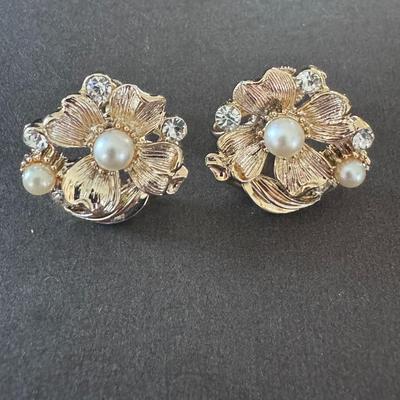
Lisner vintage flower-shaped earrings, clip-on earrings, featuring gold-toned metal, faux pearls, and clear rhinestones. Here's more information about these pieces: Design: Each earring features a layered floral design with textured petals, a central faux pearl, and accenting clear rhinestones, typical of vintage costume jewelry. Materials: They appear to be made of a gold-toned base metal, possibly brass with plating, and are adorned with imitation pearls and glass rhinestones. Era & Style: The style suggests they could be from the mid-20th century, possibly the 1950s or 1960s, a popular period for ornate floral and pearl-accented costume jewelry. 475 / 1369 -
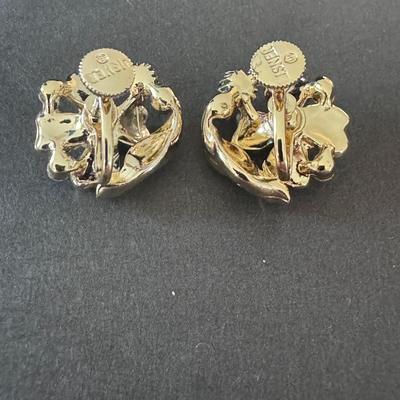
Lisner vintage flower-shaped earrings, clip-on earrings, featuring gold-toned metal, faux pearls, and clear rhinestones. Here's more information about these pieces: Design: Each earring features a layered floral design with textured petals, a central faux pearl, and accenting clear rhinestones, typical of vintage costume jewelry. Materials: They appear to be made of a gold-toned base metal, possibly brass with plating, and are adorned with imitation pearls and glass rhinestones. Era & Style: The style suggests they could be from the mid-20th century, possibly the 1950s or 1960s, a popular period for ornate floral and pearl-accented costume jewelry. 476 / 1369 -
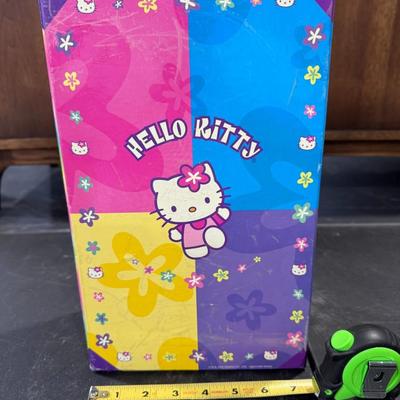
Type of Item: It appears to be a vintage or retro-style storage trunk or case, likely used for holding toys, crafts, stationery, or other small treasures. Design: The trunk features the iconic Hello Kitty character and vibrant, multi-colored panels, consistent with Sanrio's playful aesthetic. Potential Collectibility: Similar Hello Kitty trunks and cases, especially vintage ones from specific years (like 2002 or 2004), are considered collectible items by fans and enthusiasts of Sanrio merchandise. Measurements: The visible tape measure in the image suggests the user may be interested in its dimensions. While the exact size of this particular trunk isn't specified in the search results, similar items mentioned range in size (e.g., 8” x 13” x 5” for a 2004 paper doll trunk, or 17x5.5x14cm for a Japan Sanrio Original Trunk Case). 477 / 1369 -
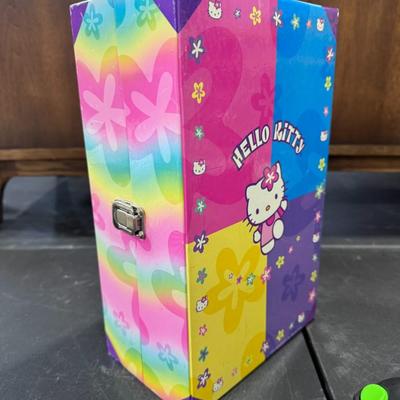
Type of Item: It appears to be a vintage or retro-style storage trunk or case, likely used for holding toys, crafts, stationery, or other small treasures. Design: The trunk features the iconic Hello Kitty character and vibrant, multi-colored panels, consistent with Sanrio's playful aesthetic. Potential Collectibility: Similar Hello Kitty trunks and cases, especially vintage ones from specific years (like 2002 or 2004), are considered collectible items by fans and enthusiasts of Sanrio merchandise. Measurements: The visible tape measure in the image suggests the user may be interested in its dimensions. While the exact size of this particular trunk isn't specified in the search results, similar items mentioned range in size (e.g., 8” x 13” x 5” for a 2004 paper doll trunk, or 17x5.5x14cm for a Japan Sanrio Original Trunk Case). 478 / 1369 -
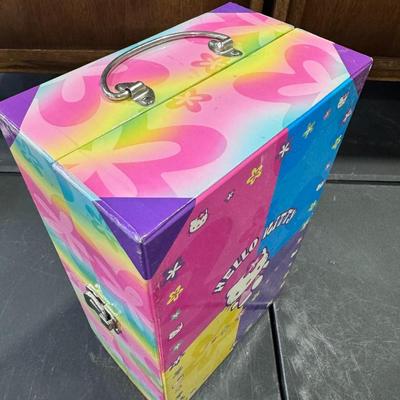
Type of Item: It appears to be a vintage or retro-style storage trunk or case, likely used for holding toys, crafts, stationery, or other small treasures. Design: The trunk features the iconic Hello Kitty character and vibrant, multi-colored panels, consistent with Sanrio's playful aesthetic. Potential Collectibility: Similar Hello Kitty trunks and cases, especially vintage ones from specific years (like 2002 or 2004), are considered collectible items by fans and enthusiasts of Sanrio merchandise. Measurements: The visible tape measure in the image suggests the user may be interested in its dimensions. While the exact size of this particular trunk isn't specified in the search results, similar items mentioned range in size (e.g., 8” x 13” x 5” for a 2004 paper doll trunk, or 17x5.5x14cm for a Japan Sanrio Original Trunk Case). 479 / 1369 -
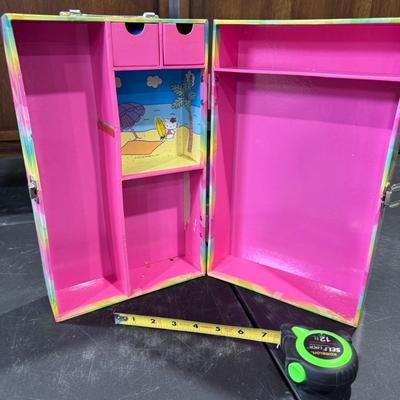
Type of Item: It appears to be a vintage or retro-style storage trunk or case, likely used for holding toys, crafts, stationery, or other small treasures. Design: The trunk features the iconic Hello Kitty character and vibrant, multi-colored panels, consistent with Sanrio's playful aesthetic. Potential Collectibility: Similar Hello Kitty trunks and cases, especially vintage ones from specific years (like 2002 or 2004), are considered collectible items by fans and enthusiasts of Sanrio merchandise. Measurements: The visible tape measure in the image suggests the user may be interested in its dimensions. While the exact size of this particular trunk isn't specified in the search results, similar items mentioned range in size (e.g., 8” x 13” x 5” for a 2004 paper doll trunk, or 17x5.5x14cm for a Japan Sanrio Original Trunk Case). 480 / 1369 -
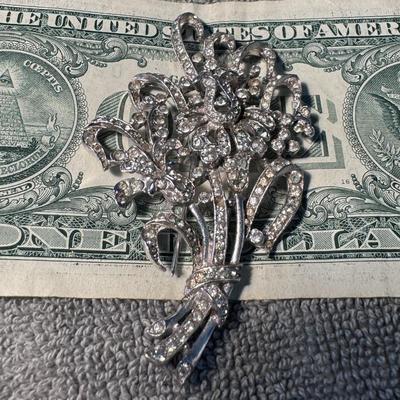
vintage Trifari rhinestone flower bouquet brooch Here are some details about the item: Type of Item: It's a brooch, a piece of ornamental jewelry designed to be attached to garments. Design: The brooch is shaped like a bouquet of flowers, adorned with clear, sparkling rhinestones. Materials: It appears to be made of a silver-tone metal and features numerous clear faceted glass stones (rhinestones). Potential Origin/Era: Based on similar items found in searches, this style of rhinestone bouquet brooch is often associated with vintage costume jewelry from eras like the Art Deco period or mid-20th century. Placement: The dollar bill serves as a background for the brooch, likely to provide a sense of scale or simply for photographic purposes. 481 / 1369 -
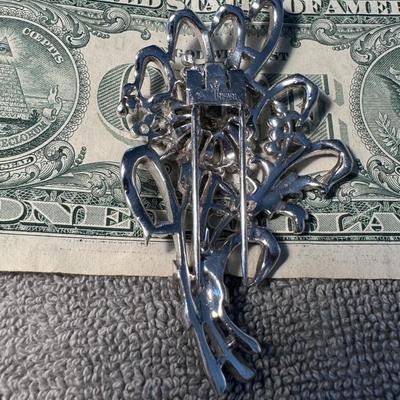
vintage Trifari rhinestone flower bouquet brooch Here are some details about the item: Type of Item: It's a brooch, a piece of ornamental jewelry designed to be attached to garments. Design: The brooch is shaped like a bouquet of flowers, adorned with clear, sparkling rhinestones. Materials: It appears to be made of a silver-tone metal and features numerous clear faceted glass stones (rhinestones). Potential Origin/Era: Based on similar items found in searches, this style of rhinestone bouquet brooch is often associated with vintage costume jewelry from eras like the Art Deco period or mid-20th century. Placement: The dollar bill serves as a background for the brooch, likely to provide a sense of scale or simply for photographic purposes. 482 / 1369 -
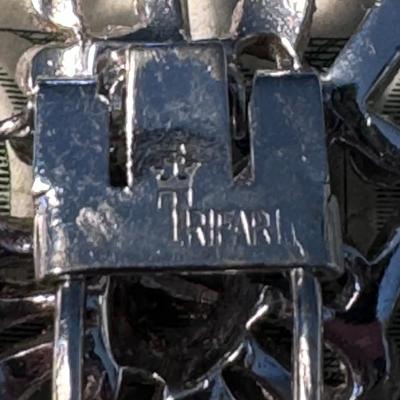
vintage Trifari rhinestone flower bouquet brooch Here are some details about the item: Type of Item: It's a brooch, a piece of ornamental jewelry designed to be attached to garments. Design: The brooch is shaped like a bouquet of flowers, adorned with clear, sparkling rhinestones. Materials: It appears to be made of a silver-tone metal and features numerous clear faceted glass stones (rhinestones). Potential Origin/Era: Based on similar items found in searches, this style of rhinestone bouquet brooch is often associated with vintage costume jewelry from eras like the Art Deco period or mid-20th century. Placement: The dollar bill serves as a background for the brooch, likely to provide a sense of scale or simply for photographic purposes. 483 / 1369 -
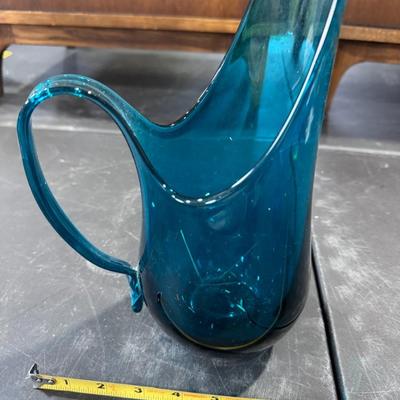
Viking Glass "Bluenique" Swung Pitcher or Vase, a notable piece of Mid-Century Modern (MCM) art glass. Here's more information about this type of piece: Manufacturer & Origin: These pieces were handblown by the Viking Glass Company in New Martinsville, West Virginia, USA. Color & Style: The distinctive bright blue, sometimes described as dark turquoise, is known as "Bluenique". The "swung" style refers to the method of shaping the glass by swinging it while hot, creating its elongated, sculptural form. Design & Period: This particular design, often associated with the Epic series and sometimes the "Six Petal" pattern, is characteristic of the Mid-Century Modern era, typically produced in the 1960s. 484 / 1369 -
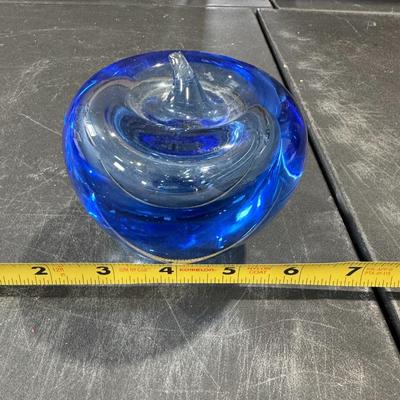
Viking Glass "Bluenique" Swung Pitcher or Vase, a notable piece of Mid-Century Modern (MCM) art glass. Here's more information about this type of piece: Manufacturer & Origin: These pieces were handblown by the Viking Glass Company in New Martinsville, West Virginia, USA. Color & Style: The distinctive bright blue, sometimes described as dark turquoise, is known as "Bluenique". The "swung" style refers to the method of shaping the glass by swinging it while hot, creating its elongated, sculptural form. Design & Period: This particular design, often associated with the Epic series and sometimes the "Six Petal" pattern, is characteristic of the Mid-Century Modern era, typically produced in the 1960s. 485 / 1369 -
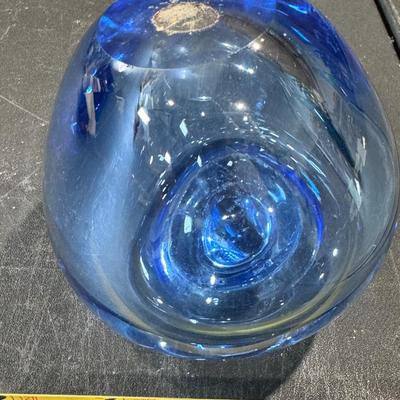
Viking Glass "Bluenique" Swung Pitcher or Vase, a notable piece of Mid-Century Modern (MCM) art glass. Here's more information about this type of piece: Manufacturer & Origin: These pieces were handblown by the Viking Glass Company in New Martinsville, West Virginia, USA. Color & Style: The distinctive bright blue, sometimes described as dark turquoise, is known as "Bluenique". The "swung" style refers to the method of shaping the glass by swinging it while hot, creating its elongated, sculptural form. Design & Period: This particular design, often associated with the Epic series and sometimes the "Six Petal" pattern, is characteristic of the Mid-Century Modern era, typically produced in the 1960s. 486 / 1369 -
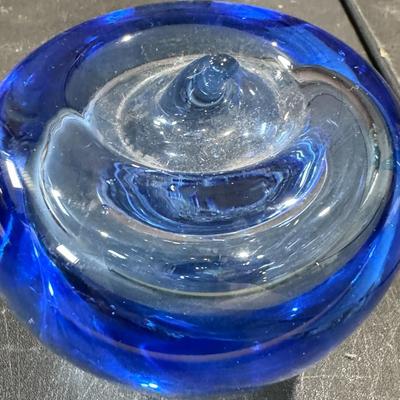
Viking Glass "Bluenique" Swung Pitcher or Vase, a notable piece of Mid-Century Modern (MCM) art glass. Here's more information about this type of piece: Manufacturer & Origin: These pieces were handblown by the Viking Glass Company in New Martinsville, West Virginia, USA. Color & Style: The distinctive bright blue, sometimes described as dark turquoise, is known as "Bluenique". The "swung" style refers to the method of shaping the glass by swinging it while hot, creating its elongated, sculptural form. Design & Period: This particular design, often associated with the Epic series and sometimes the "Six Petal" pattern, is characteristic of the Mid-Century Modern era, typically produced in the 1960s. 487 / 1369 -
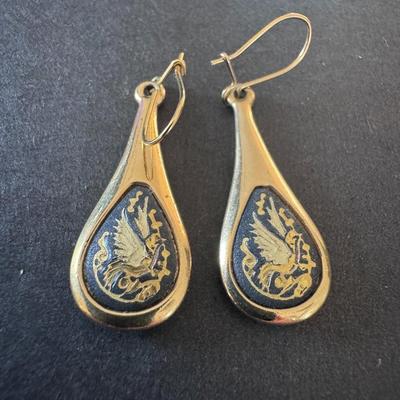
Vintage Spanish Damascene Teardrop Earrings featuring intricate designs of birds and flowers. Here's some information about these earrings: Origin & Craftsmanship: These earrings are crafted using the Damascene art form, a traditional technique originating in Damascus and later perfected in Toledo, Spain, where much of this jewelry is still produced today. Materials: Damascene involves inlaying precious metals, typically 24K gold, into a blackened steel or non-precious metal background to create striking designs. Design Elements: The earrings showcase classic Damascene motifs, including stylized birds and floral patterns, set against the characteristic dark background. 488 / 1369 -
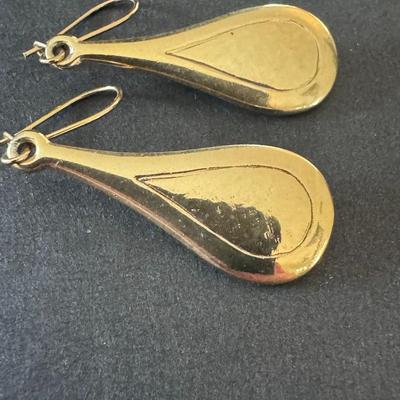
Vintage Spanish Damascene Teardrop Earrings featuring intricate designs of birds and flowers. Here's some information about these earrings: Origin & Craftsmanship: These earrings are crafted using the Damascene art form, a traditional technique originating in Damascus and later perfected in Toledo, Spain, where much of this jewelry is still produced today. Materials: Damascene involves inlaying precious metals, typically 24K gold, into a blackened steel or non-precious metal background to create striking designs. Design Elements: The earrings showcase classic Damascene motifs, including stylized birds and floral patterns, set against the characteristic dark background. 489 / 1369 -
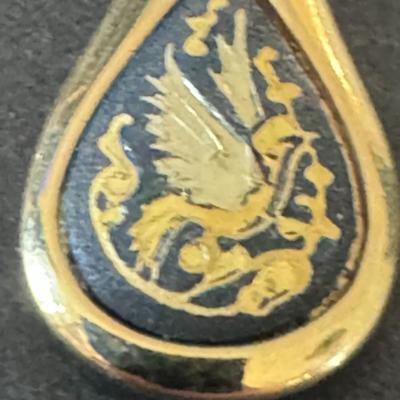
Vintage Spanish Damascene Teardrop Earrings featuring intricate designs of birds and flowers. Here's some information about these earrings: Origin & Craftsmanship: These earrings are crafted using the Damascene art form, a traditional technique originating in Damascus and later perfected in Toledo, Spain, where much of this jewelry is still produced today. Materials: Damascene involves inlaying precious metals, typically 24K gold, into a blackened steel or non-precious metal background to create striking designs. Design Elements: The earrings showcase classic Damascene motifs, including stylized birds and floral patterns, set against the characteristic dark background. 490 / 1369 -
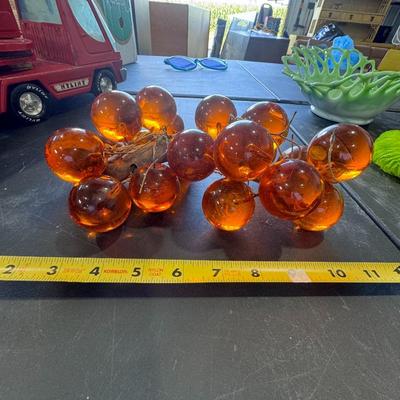
This vintage mid-century modern piece is a stunning addition to any collection. The huge lucite acrylic amber grapes on driftwood design is a unique and eye-catching piece that will add a touch of retro charm to any space. The intricate details of the grapes and the natural beauty of the driftwood make this a must-have for collectors of vintage and retro items. Perfect for display in a living room or as a statement piece in a dining room, this collectible is sure to impress. In good condition with minor scuffs. 491 / 1369 -
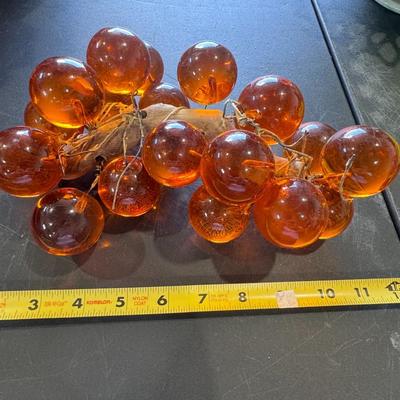
This vintage mid-century modern piece is a stunning addition to any collection. The huge lucite acrylic amber grapes on driftwood design is a unique and eye-catching piece that will add a touch of retro charm to any space. The intricate details of the grapes and the natural beauty of the driftwood make this a must-have for collectors of vintage and retro items. Perfect for display in a living room or as a statement piece in a dining room, this collectible is sure to impress. In good condition with minor scuffs. 492 / 1369 -
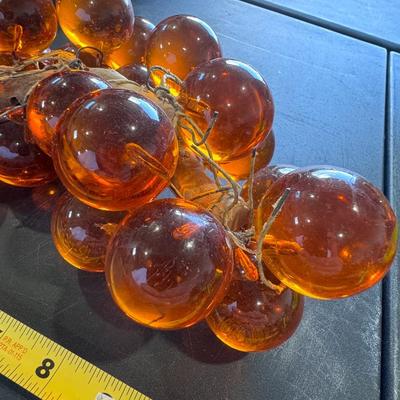
This vintage mid-century modern piece is a stunning addition to any collection. The huge lucite acrylic amber grapes on driftwood design is a unique and eye-catching piece that will add a touch of retro charm to any space. The intricate details of the grapes and the natural beauty of the driftwood make this a must-have for collectors of vintage and retro items. Perfect for display in a living room or as a statement piece in a dining room, this collectible is sure to impress. In good condition with minor scuffs. 493 / 1369 -
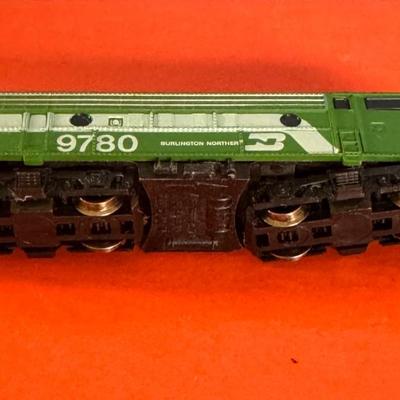
HO scale model of a Burlington Northern F7 diesel locomotive, specifically unit #9780. The EMD F7 was a popular and versatile diesel-electric locomotive produced by the Electro-Motive Division of General Motors (EMD) between 1949 and 1953. It was primarily designed for freight hauling but also used in passenger service. The Burlington Northern Railroad was formed in 1970 through the merger of several predecessor railroads, including the Great Northern Railway, Northern Pacific Railway, Chicago, Burlington and Quincy Railroad, and Spokane, Portland and Seattle Railway. The railroad later merged with the Atchison, Topeka and Santa Fe Railway in 1996 to become the Burlington Northern and Santa Fe Railway (now known as BNSF Railway). Model railroad enthusiasts can find various Burlington Northern F7 models in different scales and from various manufacturers. For example, the Intermountain N EMD F7A Burlington Northern BN #9780 model is available in N scale. There are also other HO scale models of Burlington Northern locomotives, including E8A and SD40-2 models 494 / 1369 -
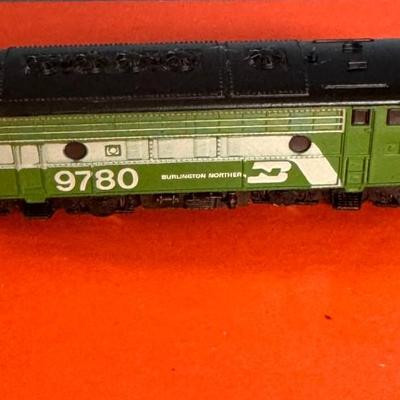
HO scale model of a Burlington Northern F7 diesel locomotive, specifically unit #9780. The EMD F7 was a popular and versatile diesel-electric locomotive produced by the Electro-Motive Division of General Motors (EMD) between 1949 and 1953. It was primarily designed for freight hauling but also used in passenger service. The Burlington Northern Railroad was formed in 1970 through the merger of several predecessor railroads, including the Great Northern Railway, Northern Pacific Railway, Chicago, Burlington and Quincy Railroad, and Spokane, Portland and Seattle Railway. The railroad later merged with the Atchison, Topeka and Santa Fe Railway in 1996 to become the Burlington Northern and Santa Fe Railway (now known as BNSF Railway). Model railroad enthusiasts can find various Burlington Northern F7 models in different scales and from various manufacturers. For example, the Intermountain N EMD F7A Burlington Northern BN #9780 model is available in N scale. There are also other HO scale models of Burlington Northern locomotives, including E8A and SD40-2 models 495 / 1369 -
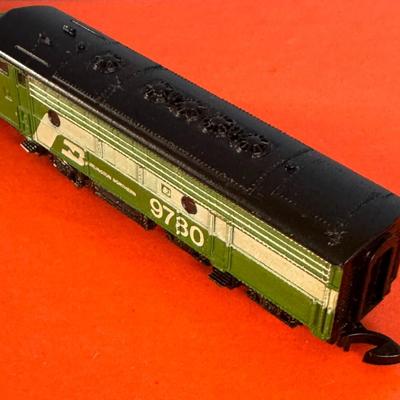
HO scale model of a Burlington Northern F7 diesel locomotive, specifically unit #9780. The EMD F7 was a popular and versatile diesel-electric locomotive produced by the Electro-Motive Division of General Motors (EMD) between 1949 and 1953. It was primarily designed for freight hauling but also used in passenger service. The Burlington Northern Railroad was formed in 1970 through the merger of several predecessor railroads, including the Great Northern Railway, Northern Pacific Railway, Chicago, Burlington and Quincy Railroad, and Spokane, Portland and Seattle Railway. The railroad later merged with the Atchison, Topeka and Santa Fe Railway in 1996 to become the Burlington Northern and Santa Fe Railway (now known as BNSF Railway). Model railroad enthusiasts can find various Burlington Northern F7 models in different scales and from various manufacturers. For example, the Intermountain N EMD F7A Burlington Northern BN #9780 model is available in N scale. There are also other HO scale models of Burlington Northern locomotives, including E8A and SD40-2 models 496 / 1369
Photos 401 - 500 of 1369
Per page:
